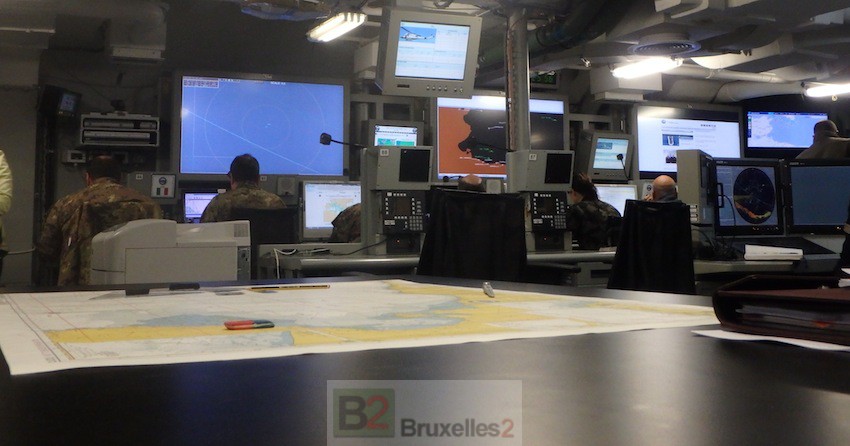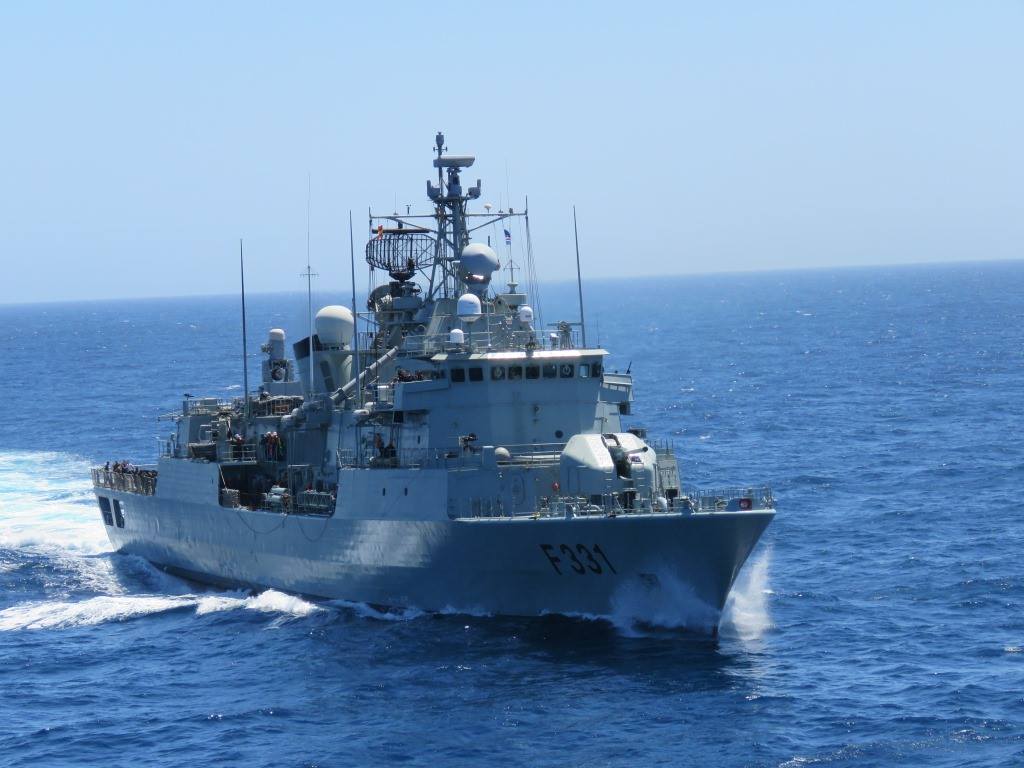Central Mediterranean route. Tripolitania lives off trafficking

(B2, aboard the Cavour) Libyan, Egyptian or Tunisian traffickers... at EUNAVFOR Med, we are getting to know them well, by dint of practicing them.
A classic watchtower...
The European mission, to identify the habits and customs of traffickers, has deployed various means. Maritime patrol aircraft regularly survey the area, as do shipboard helicopters, or even sailors onboard ships watching what is happening. The control takes place visually but also by the various radar and electronic surveillance devices.
... and a bit more sophisticated
The British have deployed an oceanographic vessel which has the advantage of having a great deal of observation equipment on board. They also have a drone but “ more on a trial basis than actually operational ", according to our information. The EUNAVFOR MED operation also uses more discreet means, such as a submarine. Very convenient, " it cannot be spotted by traditional means “testifies an officer. " This makes it possible to observe movements, telephone conversations as needed, etc. »
A real traffic in Libya
Migrants are recruited through social media, relatives or travel agency services that act for smuggling networks outside Libya. Before a passage, the migrants are accommodated in "secure areas", houses or large buildings, in rear areas a few km from the beach” where migrants stay for a period of days or months. " They work in the meantime, or are exploited by traffickers. »
A passage at night, with boarding ticket please
Just before the crossing, the migrants are brought back in groups to a camp near the beach. This sometimes requires passing " in contested areas, and the payment of escorts or 'rights of passage' at checkpoints ". Final payment takes place in the staging area, with a system quite similar to ferries: a ticket or boarding pass is used to facilitate the process. Usually around midnight, the migrants are rounded up and board the boats. The passage takes place at night. Less risky!
The Libyan police sometimes present
The Libyan coast guard or police is rare. But she sometimes does operations. " It is, to say the least, unexpected and surprising. We don't really have any information on how they operate or why they intervene at this time and not at other times. says a sailor. The idea of a certain complicity between the police and the traffickers is not entirely excluded... Beware of those who have 'caught'. They are immediately brought back to earth. And the journey is over for them. The traffickers believe they have done the work for which they were paid. If the migrant wants to try his luck again, he must pay again. If he has no money... he has to work, to be able to afford the trip. In very harsh conditions, sometimes close to slavery, we are told.
The Lampedusa Triangle
The majority of them start from Lampedusa triangle » marked at the extremities, by the ports of Zuwhara and Misrata, on the coast of Tripoli, and the island of Lampedusa at the tip. Four main embarkation points have been identified: Zuwarah, Sabratah, Garabulli and Misrata. Most rescues thus take place between 20 and 40 nautical miles, outside the line of Libyan territorial waters.
Wooden or inflatable boats?
Each area has its method. To the west of Tripoli, wooden boats are used more (wooden boat) which have the advantage of being able to take more people at a time and to be picked up (approximately 600 people at each passage). To the east of Tripoli, rubber dinghies are more commonly used (dinghi, rubber ou inflatable boat), which are easy to find, cost less to buy but take fewer people at a time (about 100-120 each time).
Where do these canoes come from?
The inflatable boats are imported from China and transit through Malta or Turkey. Maltese customs thus intercepted a container containing 20 packed inflatable boats, intended for Misrata. But the container had to be released. " There is no legal framework to retain such equipment ».
How much does a pass cost?
The cost of the passage varies according to the speed of the passage... and the nationality. We estimate the ticket “on average at $1000 confides to us Rear Admiral Gueglio who commands the operation in the area. Africans would pay less, around 500 dollars, where a Syrian can pay 1000 to 1500 dollars. The price of the passage also differs according to the type of boat and the type of organization. " It's cheaper to depart from a dinghy from Tripoli than from a wooden ship from Zuwahra”. And there are trips in 3rd or 1st class. Traveling in the hold is less expensive, but more dangerous, than on deck or in the cabin. To this, we must add the "options". The cost of a life jacket can go up to $200. A vest that is sometimes simply a replica, a fake, and whose sea-keeping quality is questionable...
How much does the business bring in?
It is estimated that the traffic business thus generates an income of 250 to 300 million euros. It represents more than half of the income of the cities of Tripolitania. Suffice to say that it is not one or two people who get rich but a good part of the population who live directly or indirectly from trafficking. Drivers, cooks, security guards, sailors, 'travel agents', logisticians, etc. are needed.
The "stock" of migrants: difficult to estimate
The number of migrants thus gathered in Libya awaiting passage varies according to the sources. Before December, there was often talk of half a million people waiting to cross. A figure evaluated by extrapolation so not very sure. Today, we are talking about a smaller figure, perhaps more realistic. About 100.000 people could be waiting for the passage. But without having real accounting possible. Suffice to say that with the return of fine weather, arrivals will be counted in the hundreds per day (see also: New migrants recovered this morning in the Mediterranean).
The criteria for a passage
The number of crossings depends on three factors, according to EUNAVFOR soldiers: 1° the flow of migrants seeking to use the central Mediterranean route, 2° the possibility of operating without being held to ransom by militias, rival groups and authorities, 3° the ability to provide transport to Europe or merchant, military or salvage vessels. And the weather, one might add, which conditions a large part of the passages. In Zuwarah, we note, the traffic thus decreased from September, following tensions between the local militias, affiliated with Tripoli or Tobruk.
(Nicolas Gros-Verheyde)
Read also: In Libya, traffickers are adapting. Tactics are changing
Read the rest of the report:



